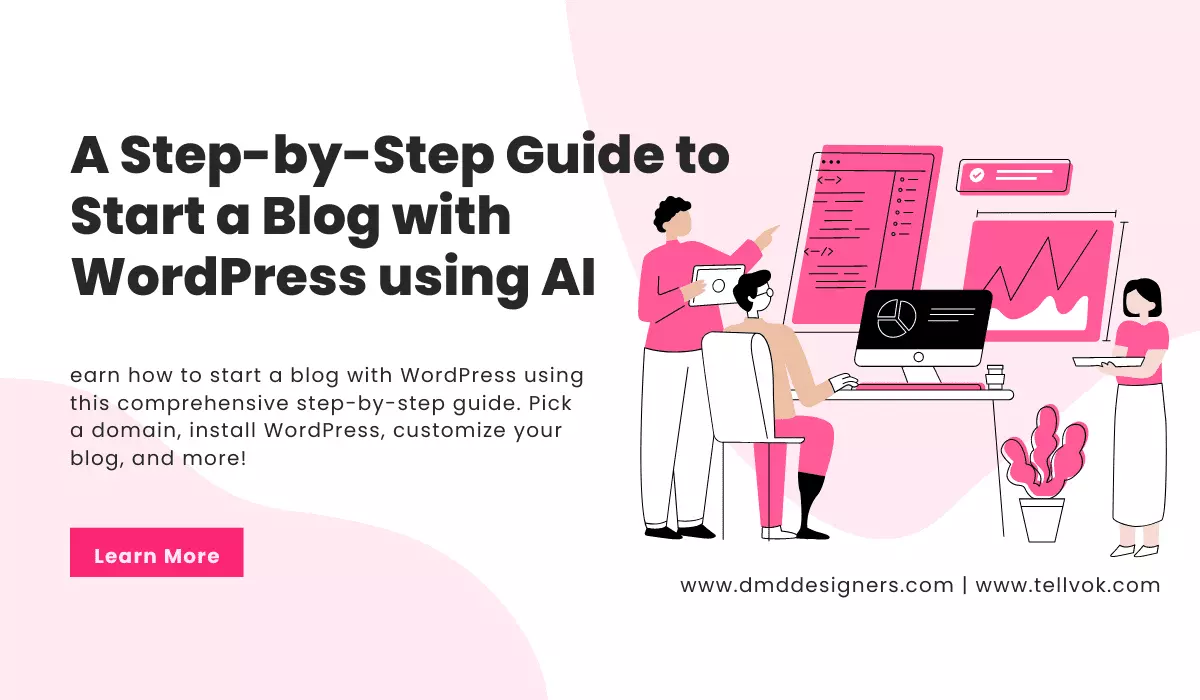
A Step-by-Step Guide to Start a Blog with WordPress Using AI
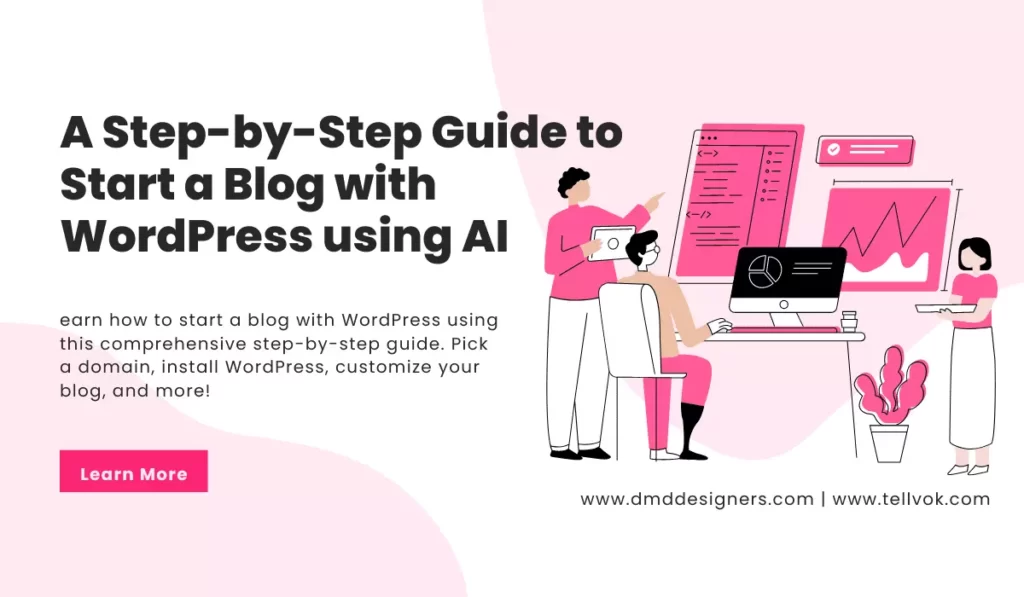
Are you ready to dive into the exciting world of blogging? Starting a blog with WordPress is a fantastic way to share your thoughts, ideas, and expertise with the world. In this step-by-step guide, we’ll walk you through the process of setting up your own blog using WordPress. Let’s Start a Blog with WordPress!
Table Of Content
- Table of Contents
- Step 1 : Start a Blog with WordPress Choosing the Perfect Domain and Hosting Provider
- Domain Name
- Hostinger
- Step 2: Choose a Platform (Why Choose WordPress as Your Blogging Platform?)
- Step 3 : Installing WordPress on Your Hosting Account
- Step 4 : Choosing a Theme that Suits Your Blog's Style
- Step 5 : Enhancing Your Blog with Essential WordPress Plugins
- Step 6 : Creating Engaging Blog Posts to Captivate Your Readers
- Step 7 : Customizing Your Blog's Appearance and Functionality
- Step 8 : Adding a Contact Form for Easy Communication
- Step 9 : Tracking Your Blog's Performance with Google Analytics
- Step 10 : Boosting Your Blog's Visibility with SEO Techniques
- Step 11 : Generating Income from Your Blog's Content
- Step 12 : Promote Your Blog using Free and Paid Methods
- Frequently Asked Questions (FAQs) related to starting a blog with WordPress
Blogging has become increasingly popular in recent years as a way for individuals to share their thoughts, expertise, and passions with the world. If you’re considering starting a blog, you’re in the right place. In this step-by-step guide, we will walk you through the process of starting a blog with WordPress, one of the most popular blogging platforms available.
Table of Contents
Step 1 : Start a Blog with WordPress Choosing the Perfect Domain and Hosting Provider
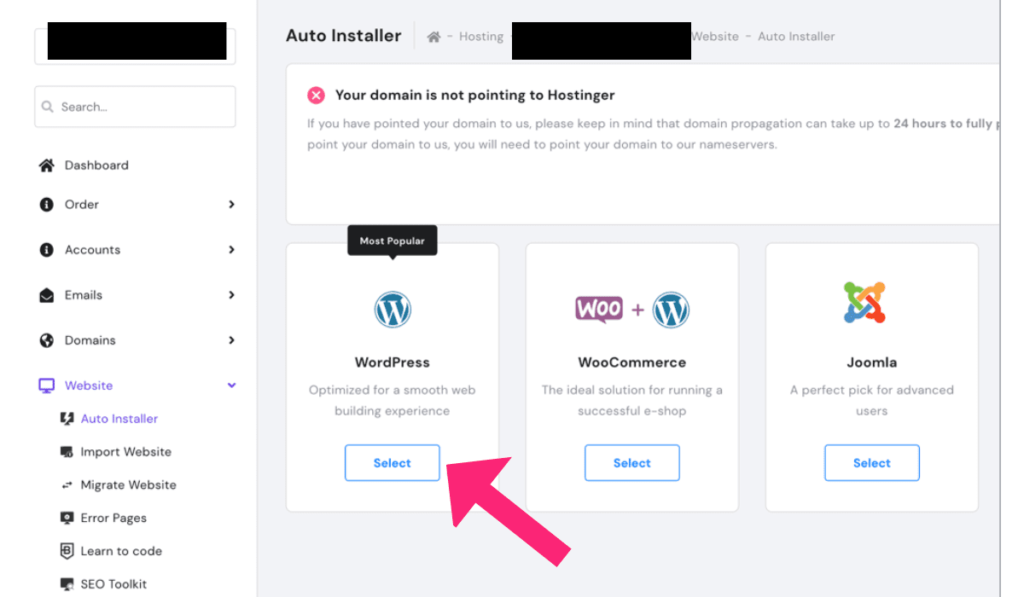
The first step in Start a Blog with WordPress is to choose a domain name, which will serve as the address for your blog on the internet. It’s important to pick a domain name that is unique, memorable, and relevant to your blog’s content. Once you’ve chosen a domain name, you’ll need to select a hosting provider to store your blog’s files and make it accessible online. Choose a hosting provider that offers good performance, security, and customer support.
Step 2: Choose a Platform (Why Choose WordPress as Your Blogging Platform?)
WordPress is a powerful and user-friendly content management system (CMS) that is widely used for blogging. It offers a wide range of features and customization options, making it an ideal choice for both beginners and experienced bloggers. You can choose between WordPress.com, which is a hosted platform, or WordPress.org, which allows you to self-host your blog.
Step 3 : Installing WordPress on Your Hosting Account
If you choose to self-host your blog using WordPress.org, you’ll need to install WordPress on your hosting provider’s server. Most hosting providers offer a one-click installation option, which makes the process quick and easy. After installation, you’ll be able to access the WordPress dashboard, where you can manage your blog’s content, design, and settings.
Step 4 : Choosing a Theme that Suits Your Blog's Style
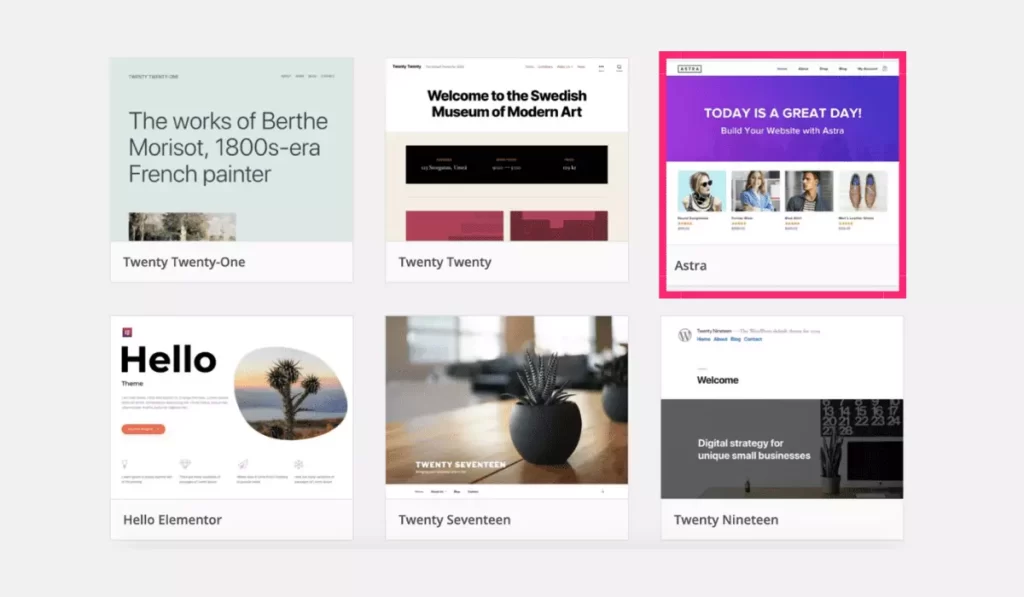
WordPress offers a wide range of themes that control the appearance and layout of your blog. You can choose a free theme from the WordPress theme directory or purchase a premium theme for more advanced features and customization options. When selecting a theme, consider the overall design, responsiveness, and compatibility with plugins. so select one that aligns with your branding and offers the functionality you need.
Step 5 : Enhancing Your Blog with Essential WordPress Plugins
Plugins are add-ons that enhance the functionality of your WordPress blog. There are numerous plugins available for various purposes, but some essential ones include:
Yoast SEO: Helps optimize your blog for search engines and improves your chances of ranking higher in search results.
Akismet: Protects your blog from spam comments.
Jetpack: Provides a suite of features, including site analytics, security, and social media sharing.
Contact Form 7: Allows you to create and manage contact forms on your blog.
Step 6 : Creating Engaging Blog Posts to Captivate Your Readers
With your blog set up and customized, it’s time to create your first blog post. In the WordPress dashboard, navigate to the “Posts” section and click on “Add New.” Here, you can write your blog post using the built-in editor, format the text, add images, and insert links. Once you’re satisfied with your post, click “Publish” to make it live on your blog.
Step 7 : Customizing Your Blog's Appearance and Functionality
To make your blog unique and personalized, consider customizing various elements. This may include modifying your blog’s header, sidebar, footer, and adding widgets for additional functionality. You can also create and assign menus to make it easier for visitors to navigate your blog.
Step 8 : Adding a Contact Form for Easy Communication
Having a contact form on your blog allows visitors to reach out to you easily. To create a contact form in WordPress, you can use the Contact Form 7 plugin mentioned earlier. Install and activate the plugin, then navigate to “Contact” in the WordPress dashboard. Customize the form fields and settings to suit your needs, and then copy the generated shortcode. Create a new page or post, paste the shortcode, and publish it. Your contact form will now be accessible to visitors.
Step 9 : Tracking Your Blog's Performance with Google Analytics
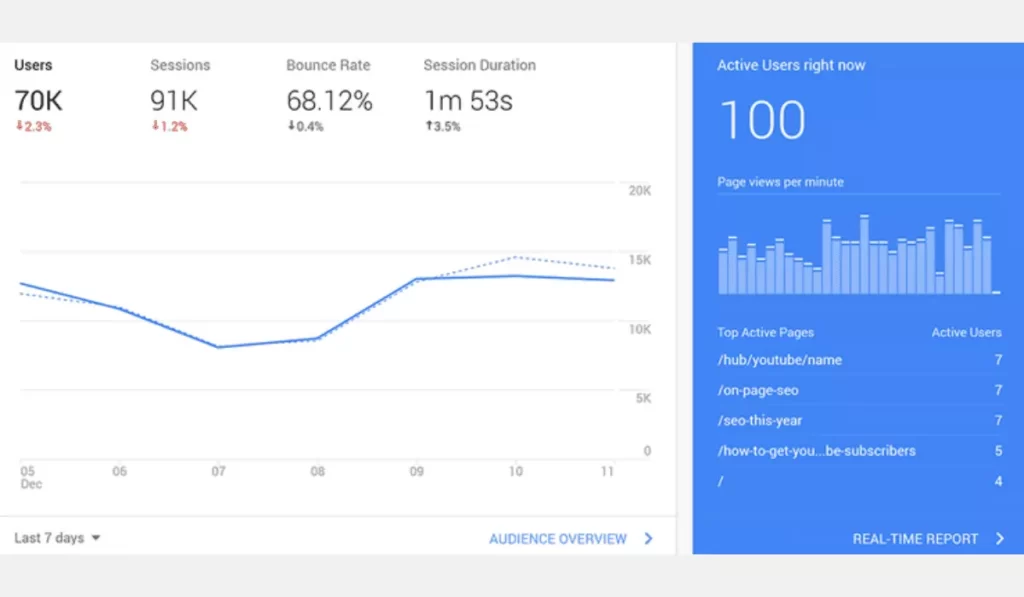
Google Analytics is a powerful tool that provides valuable insights into your blog’s performance and audience behavior. To set up Google Analytics tracking on your WordPress blog, follow these steps:
- Create a Google Analytics account or log in to your existing account.
- Once logged in, click on “Admin” in the lower-left corner.
- Under the “Property” column, click on “Create Property” and fill in the necessary details.
- After creating the property, you’ll receive a tracking ID.
- Install a Google Analytics plugin like MonsterInsights or Google Analytics Dashboard for WP (GADWP) on your WordPress site.
- Activate the plugin and navigate to its settings.
- Enter your Google Analytics tracking ID in the appropriate field.
- Save the settings and your WordPress blog is now connected to Google Analytics. It may take a few hours for data to start appearing in your account.
Step 10 : Boosting Your Blog's Visibility with SEO Techniques
Boost your blog’s visibility in search engine results by optimizing it for Search engine optimization (SEO). Use an SEO plugin like Yoast SEO or All in One SEO Pack to optimize your blog posts’ meta tags, headings, URLs, and keywords.
Here are some steps to optimize your WordPress blog for SEO:
- Install and activate the Yoast SEO plugin mentioned earlier.
- Go to the “SEO” section in the WordPress dashboard and navigate to the “General” tab.
- Configure the settings, including your site’s title, meta description template, and social profiles.
- In the “Webmaster Tools” tab, verify your blog with search engines like Google and Bing.
- Under the “Search Appearance” tab, optimize your blog’s title and meta description templates.
- Utilize the “Readability” and “Keyword Analysis” features to improve your content’s quality and keyword usage.
- Optimize your blog’s permalinks by using descriptive URLs that include relevant keywords.
- Focus on creating high-quality, engaging content that provides value to your audience.
- Build quality backlinks by promoting your blog through guest posting, social media, and networking with other bloggers in your niche.
Step 11 : Generating Income from Your Blog's Content

Once your blog starts gaining traction, you may want to monetize it. Here are some popular methods for making money from your WordPress blog:
- Display Advertising: Join advertising networks like Google AdSense or Mediavine to display ads on your blog.
- Affiliate Marketing: Promote products or services and earn a commission for every sale or referral made through your blog.
- Sponsored Posts: Partner with brands to write sponsored content that promotes their products or services.
- Digital Products: Create and sell e-books, online courses, or digital downloads related to your blog’s niche.
- Membership Sites: Offer exclusive content or services to paid members.
- Consulting or Freelancing: Leverage your expertise to offer consulting services or freelance work within your niche.
Step 12 : Promote Your Blog using Free and Paid Methods
To drive traffic to your blog, promote it using both free and paid methods. Utilize social media platforms, guest posting, email marketing, and SEO techniques. Consider paid advertising options like Google Ads or Facebook Ads to accelerate your blog’s growth.
To drive traffic to your blog, promote it using both free and paid methods, you need to promote it effectively. Here are some methods for promoting your WordPress blog:
Free Methods:
- Social Media Marketing: Share your blog posts on popular social media platforms like Facebook, Twitter, Instagram, and LinkedIn. Engage with your audience, join relevant groups, and use hashtags to reach a wider audience.
- Email Marketing: Build an email list and send newsletters or updates to your subscribers. Offer valuable content and incentives to encourage people to sign up for your mailing list.
- Guest Blogging: Write guest posts for other blogs in your niche to expand your reach and gain exposure. Include a bio or author box with a link back to your blog to drive traffic.
- SEO Optimization: Implement the SEO strategies mentioned earlier to improve your blog’s visibility in search engine results. Focus on targeting relevant keywords, creating high-quality content, and optimizing your meta tags.
- Engage in Online Communities: Participate in forums, groups, and online communities related to your niche. Contribute valuable insights, answer questions, and share your blog posts when appropriate. Build relationships and establish yourself as an authority in your field.
Paid Methods
- Paid Advertising: Consider investing in paid advertising to promote your blog. Platforms like Google Ads, Facebook Ads, and Instagram Ads allow you to target specific audiences based on demographics, interests, and behaviors.
- Collaborate with Influencers (Free & Paid): Partner with influencers or other bloggers in your niche for collaborations, cross-promotions, or guest appearances on each other’s platforms. This can help you tap into their audience and gain more exposure.
Frequently Asked Questions (FAQs) related to starting a blog with WordPress:
The cost of starting a blog with WordPress varies depending on your needs. You can start with a domain name and hosting, which typically costs around $10 to $20 per year. Premium themes and plugins may incur additional costs, but there are also free alternatives available.
Absolutely! With WordPress, you can easily change your blog’s theme at any time without losing your content. Simply install a new theme, customize it to your liking, and activate it.
No, you don’t need coding skills to start a blog with WordPress. It offers a user-friendly interface and a wide range of themes and plugins that allow you to create and customize your blog without any coding knowledge. However, having basic HTML and CSS knowledge can be helpful for advanced customization.
Yes, you can monetize your WordPress blog through various methods like display advertising, affiliate marketing, sponsored posts, selling digital products, offering consulting services, or creating membership sites. Choose monetization methods that align with your blog’s niche and audience.
The frequency of publishing new blog posts depends on your capacity and the expectations of your audience. Consistency is key, so aim for a publishing schedule that you can maintain over time, whether it’s once a week, twice a month, or any other regular interval.
You can track your blog’s performance using Google Analytics, which provides valuable insights on visitor behavior, traffic sources, popular content, and more. Install a Google Analytics plugin on your WordPress site and connect it to your Google Analytics account to start tracking.
Please share this article if you like it!




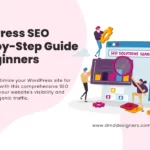

No Comment! Be the first one.